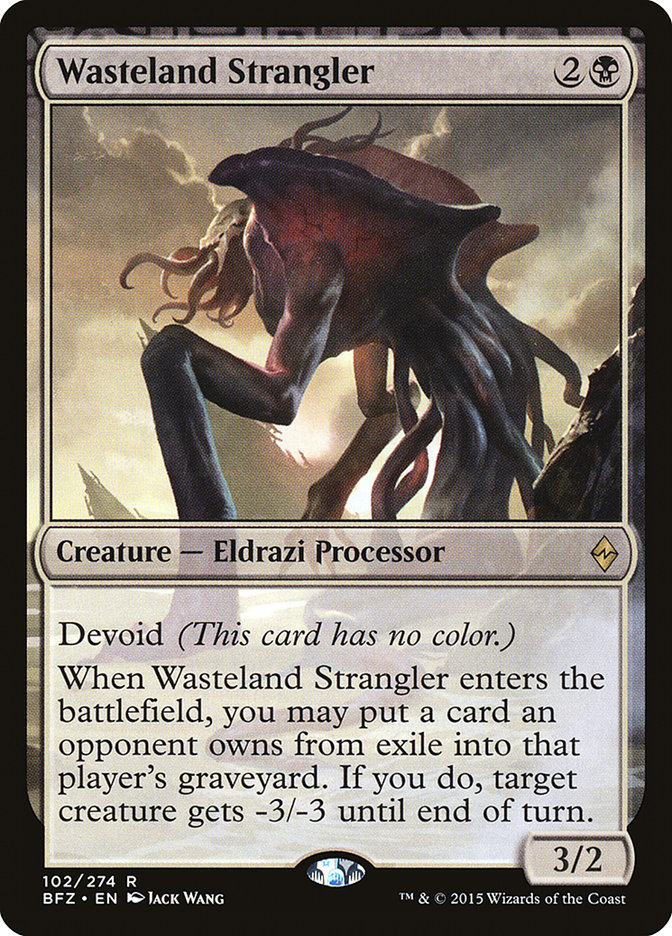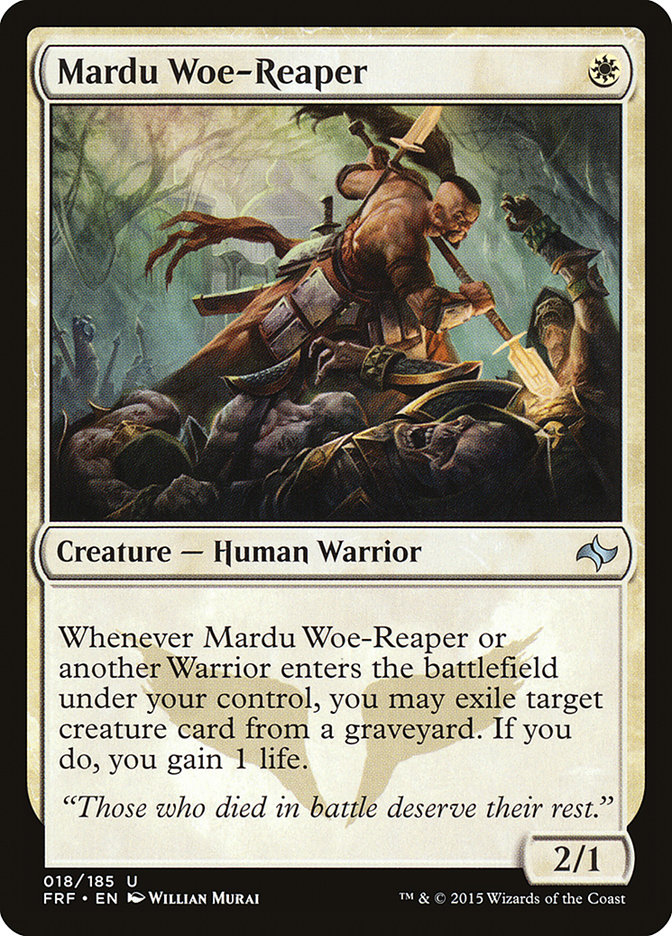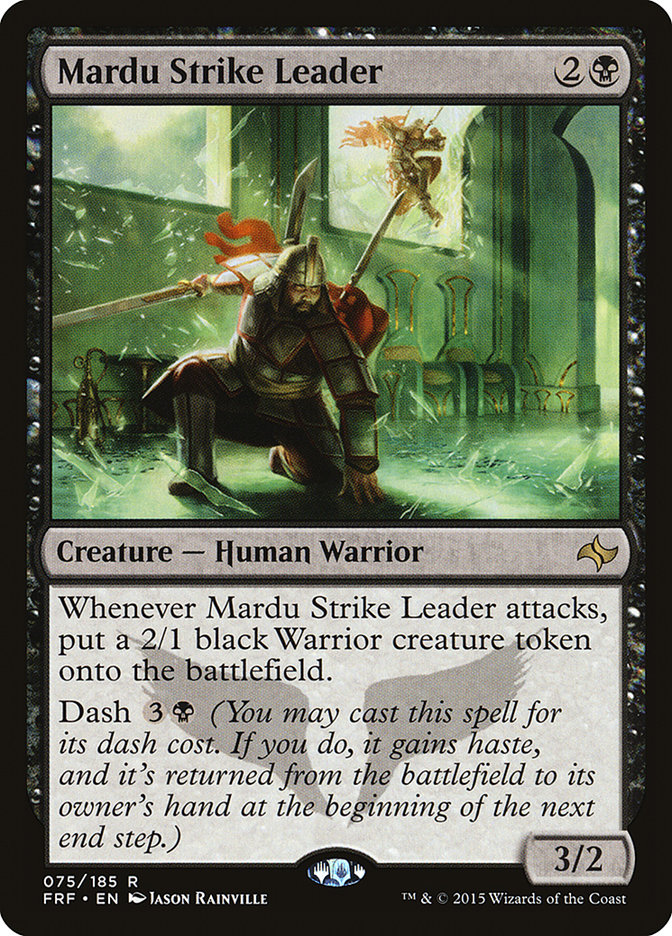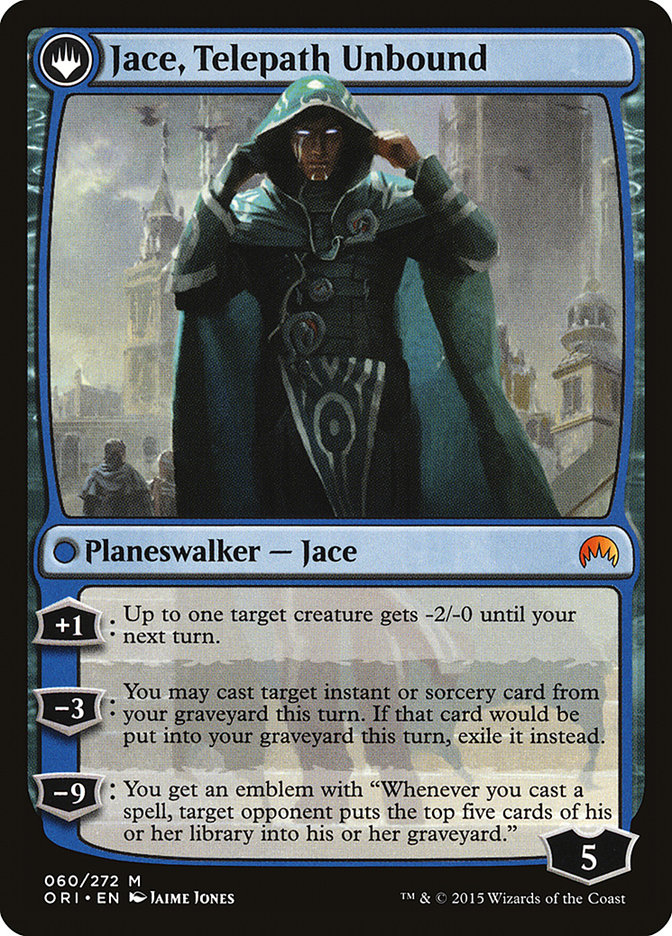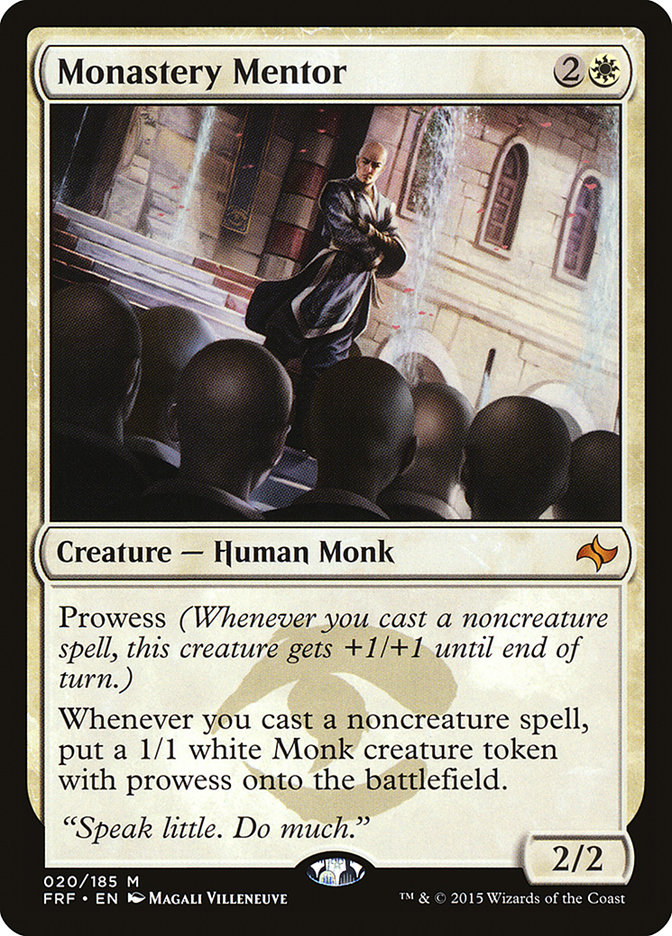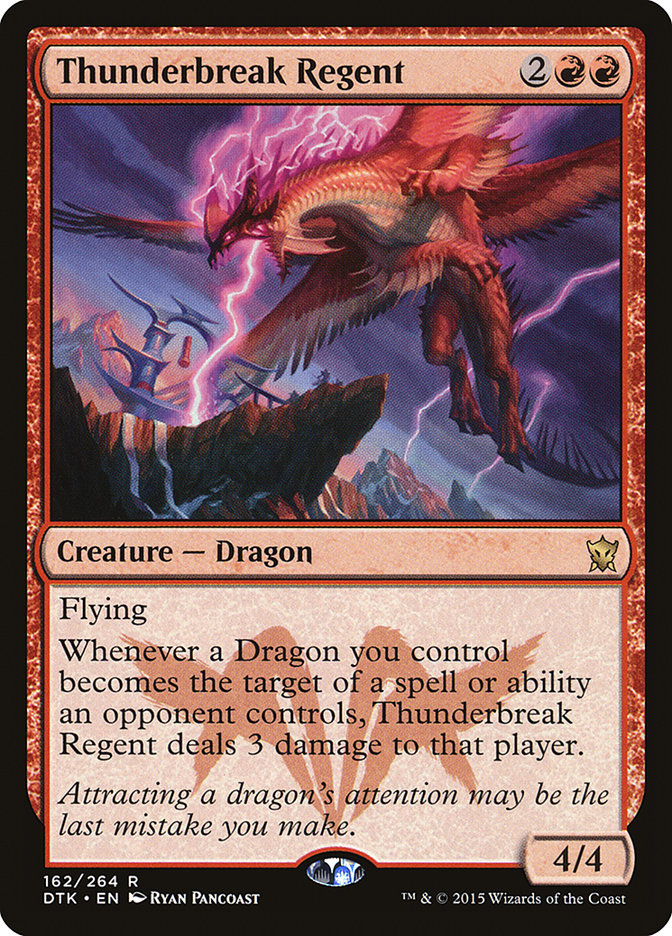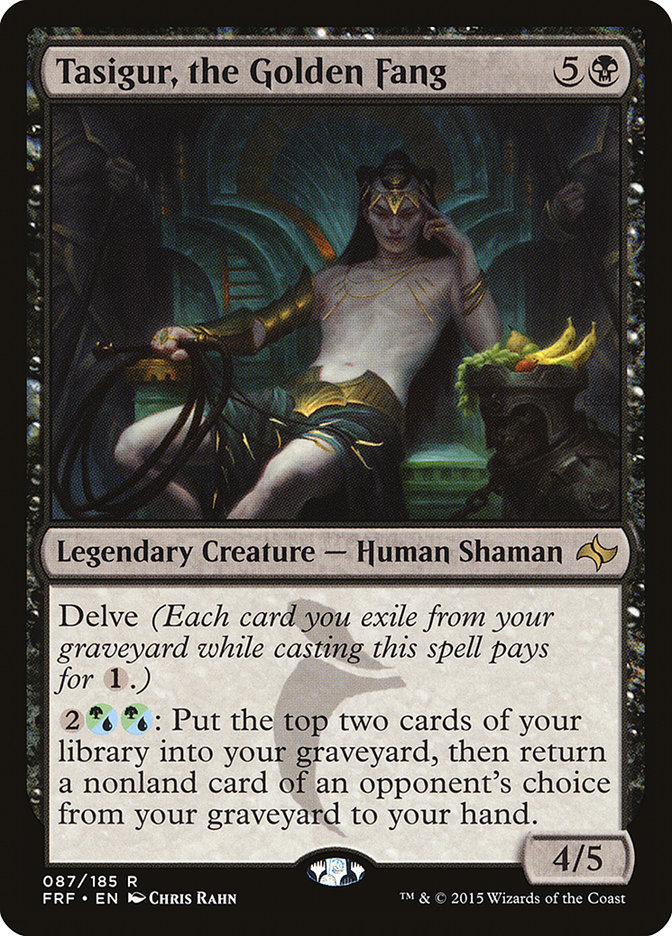The holiday season is upon us in the United States. It’s the time of year that people spend exorbitant amounts of money on plane tickets to fly across the
country and spend time with their extended family arguing about politics and trying to preserve their last shreds of sanity. It’s a time to give thanks for
what you have, only to rush out the door the next day to trample strangers for sales on what you don’t.
In the Magic world, though, we have a lot to be thankful for. Despite the somewhat rocky start of a Pro Tour finals that all but mirrored the one a year
prior, the Standard format has turned out to be quite diverse, with a huge cast of successful decks and new ones cropping up all the time. Over the last
few weeks, we’ve seen a pair of Grand Prix across the globe, along with a Standard Open here in the states. Today, I wanted to take a look at some of the
decks to come out of those events, and look at the implications they have for Standard moving forward.
Let’s start with the #GPKobe runner-up – B/W Warriors played by Joe Soh
Creatures (24)
- 4 Chief of the Edge
- 4 Bloodsoaked Champion
- 4 Mardu Strike Leader
- 4 Mardu Woe-Reaper
- 4 Blood-Chin Rager
- 2 Kytheon, Hero of Akros
- 2 Wasteland Strangler
Planeswalkers (2)
Lands (24)
Spells (10)

I experimented with a lot of aggressive white decks for the past few Standard seasons, but they never quite seemed to work. While the rare Savannah Lions
was once an all-star, 2/1s for one these days are a dime a dozen, as creatures are better in general and they can struggle to connect. While cards like
Sylvan Caryatid and Courser of Kruphix are no longer around, Kytheon and friends still need to contend with the likes of Hangarback Walker and Deathmist
Raptor, both of which are natural predators of the Savannah Lion.
Joe’s primary solution to the blocker problem is a fairly straightforward one: lots of removal. Seven copies between Silkwrap and Stasis Snare gives his
deck not only great ways to push his small creatures past opposing blockers but also the perfect answers to the death trigger of Hangarback Walker and the
graveyard recurrence of Deathmist Raptor. Incidentally, the exile effects of these enchantments also help power Wasteland Strangler, a card that stood out
to me on the Battle for Zendikar spoiler as a very powerful tool if it could find the right home. Joe’s deck is exactly that, with creatures to
push through to take advantage of the tempo gained by the Strangler, as well as high quality exile effects attached to the two enchantments, as well as the
oft-forgotten trigger on Mardu Woe-Reaper.
The three copies of Valorous Stance seem a little more questionable to me, given the dearth of four toughness creatures in many decks in the metagame, but
they are excellent against Abzan Aggro to kill Anafenza, the Foremost and Siege Rhino, and can help save your creatures in a pinch.
Some of those creatures are certainly worth saving. The reason the stock of Savannah Lions has so fallen is because creatures in general are quite a bit
better than in olden times, and that includes the options Joe had for his own deck. Foremost among these is Chief of the Edge, which not only offers three
power for two mana by itself, but it also pumps the rest of your Warriors – which is virtually every other creature in the deck. A bit trickier is
Blood-Chin Rager, which helps your small white and black creatures avoid combat with their larger green counterparts by effectively giving them menace
whenever it attacks. It doesn’t matter if your creatures are outclassed if your opponent can never effectively block them!
Perhaps the most interesting creature in the deck to me is Mardu Strike Leader, which is a card that I’ve found myself coming back to time and again
wondering if it might be good enough to justify playing in a deck. Its triggered ability to create a 2/1 Warrior every time it attacks makes it a powerful
standalone threat that can overwhelm an opponent quickly, but paying three mana for a threat that dies to Wild Slash and Fiery Impulse was just never
something I could bring myself to do. In this deck, though, every creature dies to Fiery Impulse, which makes it all the more likely that your
opponent will have used their removal by the time the Strike Leader comes out to play.
While having all low toughness creatures is good news for Strike Leader’s chances of survival, it’s bad news when you find yourself up against decks with
Radiant Flames. Both Strike Leader and Bloodsoaked Champion offer ways to rebuild your battlefield after it’s wiped, and Valorous Stance can keep one
creature around in a pinch, but this is a deck that really doesn’t want to play against cheap sweepers. I’m a little surprised not to see any copies of
Duress in either the maindeck or sideboard, since it’s a great preemptive strike against mass removal, among other things. Instead, Joe Soh chose to go the
route of tools that let him reload after a battlefield is cleared, like Mastery of the Unseen and Secure the Wastes. My inclination would be to cut both
copies of Transgress the Mind in favor of Duress, just because I’ve been really underwhelmed by Transgress and super happy with Duress when I’ve played
with the two cards, but it’s possible that Transgress is important against something like Eldrazi Ramp that I’m not considering.
All told, I like the look of the deck. While I generally prefer to be the one with the big green creatures on the battlefield, it’s nice to see scrappy
white weenies finding success on the Standard stage, if for no other reason than that diversity makes Standard that much more fun.
And by that metric, looking at the Top 8 of #GPKobe makes it look like a really fun tournament.
Creatures (14)
Planeswalkers (5)
Lands (25)
Spells (16)

When I first saw the description of this list as “Esper Tokens,” I glossed over it, thinking it was just another take on the now fairly standard Hangarback
Walker/Wingmate Roc/Secure the Wastes deck. But Shota Takao’s deck is anything but standard – and I love it.
When most people think of Esper, they tend to think of grindy control decks, but this is anything but. There is not a single piece of coutnermagic in
Takao’s maindeck, but rather a hefty suite of discard including the full four copies of Duress along with two Despise. These help clear the way for Jace,
who can later recast them to further rip the opponent’s hand apart – if there’s even time for that once Monastery Mentor hits the table.
I’ve sung the praises of Duress in this Standard format many times already, but this may be the best home for it I’ve seen yet. Not only can it
preemptively deal with potential removal for your early creatures but it also works extremely well with a flipped Jace. When I was trying out Jace in a
variety of proactive decks while testing for #PTBFZ, I repeatedly found that I would simply not have good options for spells to recast once he flipped,
especially against control decks. My Jace would flip and then just be worse than it was as a Merfolk Looter because all I had to recast were removal spells
or reactive cards like Stubborn Denial.
Not so with Duress. Recasting discard spells with Jace is absolutely devastating against control decks, which are often already put into quite the bind
when you’re able to strip their key cards away the first time and leave them unable to deal with an imminent threat. Dragonlord Ojutai fell out of favor
for a long time due to the popularity of Crackling Doom, but he’s much more likely to stick on the battlefield if you precede him with a Duress. The same
can be said for Monastery Mentor.
I’ve generally not been a big fan of most decks I’ve seen including Monastery Mentor, since they rarely seem to have enough tools to really get the token
train going. But with both Jace and Seeker of the Way as earlygame lightning rods for removal as well as four Duress to help clear the way, if any Standard
deck can get a Mentor to stick, it’s going to be this one. Similarly, the discard package means that there are ample cheap ways to trigger the Mentor, both
to generate and pump your token army. On top of that, Gideon and Sorin both offer additional ways to boost your Mentor-fueled team on offense, as well as
generate threats on their own.
This deck seems like it would just tear its way through most control decks and give many other midrange decks fits too. I have to imagine that aggressive
matchups are where it is likely to struggle, since it only has so much cheap removal and not nearly as much time to get Mentor online. Seeker of the Way’s
lifelink can certainly do a lot of work, but Atarka’s Command is the perfect foil for even an army of Seekers, as Takao learned in his semifinal match of
#GPKobe when he lost to eventual champion Morofuji and his Atarka Red deck.
Meanwhile, across the world also smashing control decks…
Creatures (20)
- 4 Rattleclaw Mystic
- 4 Savage Knuckleblade
- 2 Tasigur, the Golden Fang
- 2 Thunderbreak Regent
- 4 Woodland Wanderer
- 4 Snapping Gnarlid
Planeswalkers (2)
Lands (26)
Spells (12)

Hey, what do you know – my deck works! Josh McClain posted a Top 8
finish with a slightly modified version of the Temur Black deck I talked about a few weeks back, with the main change being a reduction of Thunderbreak
Regents in favor of Tasigur, the Golden Fang, along with a corresponding shift in a Draconic Roar to a Fiery Impulse. I can certainly get behind the
change, since the deck can certainly glut on four mana creatures, especially against opponents who kill Rattleclaw Mystic on sight. Interestingly,
Rattleclaw Mystic does as much to play a turn 3 Tasigur whether he’s on the battlefield or in your graveyard, as long as you have two fetchlands to help
fuel the delve as well. This change also allows a bit of a shift in the manabase away from as many red sources, thus enabling the inclusion of an
additional Lumbering Falls at the cost of a Frontier Bivouac, which is another bit of added power.
I actually think this deck may be even better positioned for the Standard metagame right now than when I first proposed it. The rising popularity of Esper
Dragons is excellent news for Temur, since Stubborn Denial is at its best against slower controlling decks. It also doesn’t hurt that literally every
non-Rattleclaw Mystic creature in the deck is big enough on offense to attack into Dragonlord Ojutai, leaving one of Esper’s best defensive measures
against creature decks much less effective. Most of the current Esper Dragon lists are playing Jace in their maindecks, as well, which means that even the
removal spells in the deck won’t be dead draws.
I’m strongly considering making my way to the #SCGINVI coming up in Las Vegas in December, and seeing someone else finding success with the deck I’m most
likely to end up bringing certainly helps add fuel to the fire. While I’ve been winning a lot with the deck on Magic Online, I know enough to take any
results from smaller events on there with a grain of salt, since it’s not always the best competition. But thanks, Josh, for testing my deck out in the
real world and showing me that it can win there too. It makes it all the more likely I’ll find my way to Vegas.
Is there some way I can play Savage Knuckleblade in Legacy too?

